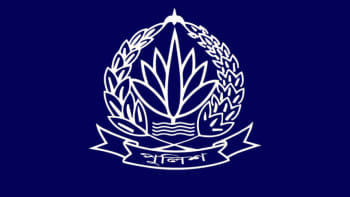How a train to Tehran is rewriting the world’s map

The whistle tears across Iran's sun-cracked deserts—a freight train's war cry, hauling the future on its back. This locomotive has completed its maiden run from Xi'an to Tehran, stacked with defiance. Its arrival wasn't just a delivery; it was a geopolitical quake. The China-Iran corridor, bypassing western sea lanes, had become a steel reality. And then this year we witnessed Israeli bombs lighting up Natanz while a US ambassador whispered of Truman and nuclear fire. Coincidence? No. This was the sound of old empires panicking as a new world clawed free.
Rewind a century. British strategist Halford Mackinder called Eurasia's landlocked core the "Heartland"—history's ultimate prize. His 1904 warning echoed: "Who rules the Heartland commands the World-Island." The Trans-Siberian Railway first made maritime powers sweat. Now, China's overland artery—slashing China-to-Iran transit from 40 risky sea days to 15—fulfils Mackinder's prophecy. It's Heartland power reborn, dodging choke points like the Strait of Hormuz, where 45 percent of China's oil sails under Western guns.
For Iran, the corridor is its lifeblood. Despite US sanctions, it transports 90 percent of Iran's oil exports to China—a $25 billion lifeline supplying 16 percent of Beijing's crude needs. Sanctions? Bypassed. Blockades? Outflanked. This isn't just trade—it is sovereignty forged through rail tracks.
Yet, the corridor's genius lies in its connection. It locks into Russia's International North-South Transport Corridor, weaving a sanctions-proof net across Eurasia. Overnight, Iran morphs from pariah to pivotal hub—bridging China to Turkey and beyond.
So why the bombs? Israel Natanz attack followed the train's debut. Officially, Iran "raced for a nuke." Yet US spies insisted Tehran was "years away from a weapon."
Then, atomic nostalgia: A US envoy compared Trump to Truman, who nuked Japan despite evidence it wasn't needed to win the war. The ghost of 1945 haunted 2025, signalling readiness to burn cities for dominance. As CENTCOM carriers prowled Iran's coast, China warned that "regime change" risked a global energy "nightmare."
For the non-Western world, this corridor ignites hope: energy security unchained from gunboat diplomacy, development without IMF shackles, and sanction defiance. For the West, it's extinction logic: 500 years of sea-rule upended by Heartland rails, the petrodollar bleeding as China pays Iran in yuan, NATO fracturing while Ankara flirts with BRICS.
Picture the duel: A train—a steel Doctor Zhivago crawling Central Asia's steppes—embodying slow creation. Against it, the fireball over Natanz—the old order's violent spasm. Mackinder's "Great Game" reloaded: hypersonics and digital yuan replacing cavalry charges.
That whistle howling through Iran isn't noise. It's a manifesto. The Heartland stirs. Empires clutching sea-power maps hear their requiem. For billions, it's the dawn of multipolar sovereignty—where trade runs on sovereign tracks, not imperial tides. Bombs bring darkness, but gaze east: light glows on the rails of a fairer world.
Zakir Kibria is a Bangladeshi writer, policy analyst and entrepreneur based in Kathmandu. He can be reached at [email protected].
Views expressed in this article are the author's own.
Follow The Daily Star Opinion on Facebook for the latest opinions, commentaries and analyses by experts and professionals. To contribute your article or letter to The Daily Star Opinion, see our guidelines for submission.

 For all latest news, follow The Daily Star's Google News channel.
For all latest news, follow The Daily Star's Google News channel. 










Comments